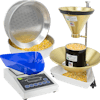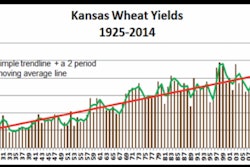
By Richard Wegener
Last month the Food and Drug Administration (FDA) issued a proposed rule regarding sanitary transportation of food. The last of seven major proposed rules mandated by the Food Safety Modernization Act (FSMA), the sanitary transportation rule is a real straggler in more ways than one; it drags us back nine years, to a time when President Bush signed a highway bill that shifted the bulk of responsibility for transportation sanitation from the Department of Transportation to the FDA. Long since exposed as failing to observe Congressional directives to enact regulations, the Bush bill’s requirement to enact regulations to require shippers, motor and rail carriers and receivers to use sanitary transportation practices to ensure that food is not adulterated was never obeyed by the FDA. The new rule, now mandated by FSMA, is an effort by the FDA to “catch up,” and then some, with the regulation of food transportation. The fact that the FDA has waited nine years to act is hardly newsworthy. What is noteworthy is that the agency admits it is proposing 32 pages of regulations to deal with “isolated incidents of insanitary transportation practices” for food. (79 Federal Register 7006, Feb. 5, 2014)
Is the proposed rule necessary? Will the proposed rule succeed?
The FDA’s role in food transportation
The FDA has long been charged with requiring that food traveling in interstate commerce cannot be adulterated or misbranded.
For the purposes of regulating safe food transportation, the concern is mainly with adulteration of the food during transportation.
The Food, Drug and Cosmetic Act (FDCA) prohibits food from being introduced into interstate commerce if it has been held (and “held” is interpreted to include being held in transport) in unsanitary conditions, which might have put it into contact with filth or subjected to conditions rendering it dangerous to human health.
Although the FDA has had the power to regulate food transportation for many years, the agency has instead focused the vast majority of its actions to regulate establishments where the actual processing of food takes place and where inspections can focus on processing operations like canning and pasteurization. And much of that regulation of food safety and sanitation has been through the use of Good Manufacturing Practice (GMP) regulations. Now, the new rule seeks to impose Good Transportation Practices (GTPs).
What does the proposed rule do?
The FDA’s proposed rule would require those who transport food to use sanitary transportation practices to ensure the safety of food.
With some exceptions, the rule broadly applies to shippers, receivers and carriers who transport food in the United States by motor or rail, whether or not the food enters interstate commerce.
It would also apply to a person outside of the United States, such as an exporter, who ships food to the United States in an international freight container by oceangoing vessel or in an air freight container, and arranges for the transfer of the intact container in the United States onto a motor or rail vehicle for transportation in U.S. commerce, if that food will be consumed or distributed in the United States.
The FDA would consider this person to be a shipper under this proposed rule because the person would be initiating a shipment of food by motor or rail, even if doing so from abroad, that would be entering U.S. commerce.
Specifically, the proposed rule:
- Is intended to ensure that persons engaged in the transportation of food that is at the greatest risk for contamination during transportation follow appropriate transportation sanitation practices. For example, the proposed rule would require that shippers inspect a vehicle for cleanliness prior to loading food that is not completely enclosed by its container, such as fresh produce in vented boxes, onto the vehicle. The proposed rule would also require time/temperature control to ensure their safety for products such as meat, poultry, seafood, raw sprouts or unpasteurized shell eggs, or to prevent microbial spoilage, such as pasteurized juice, as well as take actions to ensure the maintenance of the transportation cold chain such as the pre-cooling of the vehicle by the carrier with subsequent verification by the shipper before the food is loaded onto the vehicle;
- Would require that shippers specify to carriers in writing the sanitary requirements for a vehicle or transportation equipment to be provided for all food subject to the rule and the temperature requirements for foods subject to temperature control requirements. The rule would require that shippers maintain specific records that demonstrate they provide this information to carriers;
- Would require that for food subject to temperature controls, carriers demonstrate to shippers and, upon request, to receivers that they have maintained appropriate temperature control for the food during the transportation period. The rule would also require carriers to provide information to shippers about previous cargoes hauled in bulk vehicles offered for the transportation of food and the intervening cleaning of those vehicles. The proposed rule would require that carriers develop and implement written procedures subject to record keeping that describe how they will provide this information to shippers and receivers;
- Would establish requirements for carriers to develop and implement written procedures subject to record keeping that specify its practices for cleaning, sanitizing and inspecting vehicles and other transportation equipment; and
- Would establish requirements for the training of carrier personnel engaged in transportation operations, including a requirement for records to document the training.
Is this new layer of regulation necessary?
Previously lacking strict federal oversight, the food transportation industry has developed its own guidelines and best practices addressing a number of issues, including dedication of vehicles, cleaning of vehicles, cold chain, loading and unloading, training and record keeping.
For example, grain is delivered to mills by truck, rail or barge, and flour leaves by truck and rail.
The practices used by mill operators to ensure that vehicles are sanitary are those consistent with practices for low safety risk foods.
These practices generally include the following: ongoing vehicle maintenance; thorough cleaning and inspection of vehicles prior to loading; washing of vehicles on a fixed schedule; training of employees on appropriate loading and unloading procedures; use of appropriate packaging such as one-way pallets and totes; use of self-audits and/or third-party audits to ensure conformance with these practices. The types of information currently disclosed to mill operators generally include the following: vehicle inspection records; vehicle wash records; loading records; seal verification records; and bill of lading verification records.
These records are disclosed via email, fax or hand delivery by the operator of the vehicle.
The records kept by mill operators generally can include vehicle, inspection records, vehicle wash records, loading records, seal verification records, bill of lading verification records, employee training records and audit reports.
Given the state of industry practices, it is interesting that the FDA is not able to fully quantify the benefits of the proposed rule, including little data on how industry practices would actually change as a result of the rule. According to the agency, “We lack sufficient data to quantify the potential benefits of the proposed rule. The causal chain from inadequate food transportation to human and animal health and welfare can be specified but not quantified. Because no complete data exists to precisely quantify the likelihood of food becoming adulterated during its transport, we are unable to estimate the effectiveness of the requirements of the proposed rule to reduce potential adverse health effects in humans or animals.” (79 Federal Register 7007, Feb. 5, 2014)
This is hardly a ringing endorsement for the necessity of the proposed rule. Nonetheless, the agency proposes substantial regulatory burdens on those involved in the transportation of food.
Regulating food trans-portation is problematic
The divide between GMPs for food processing plants and food transport trucks and railcars has historically been huge, but with good cause.
Regulating food transportation is not without unique challenges. One of the most obvious — transportation is mobile. And the number of possible “sites” to regulate and inspect are so numerous, it strains the imagination. The proposed rule is estimated to cover nearly 84,000 entities, a number that includes carriers engaged in food transportation, food and animal facilities, and USDA-inspected establishments.
But these numbers are only the proverbial “tip of the iceberg.” It is the rolling stock — refrigerated trucks and railcars, which disclose the magnitude of the proposed rule’s impact.
More than 50 million truck-related food shipments per year will be affected, as well as more than 3 million railcar loads of food. But the problems with food transportation are not limited to the number of “moving targets” to be regulated; they extend to the impact inspections can have on temperature controls of product shipments. Temperature is one of the most readily apparent threats to food during transport, having the ability to both control the growth of undesirable microorganisms to ensure safety and to prevent micro¬bial spoilage.
For potentially hazardous prod¬ucts (like ice cream) and perishables (like meat, poultry, pasteurized juices and frozen foods), the chal¬lenge is to maintain proper refrigera¬tion temperatures to keep the “cold chain” from breaking. Once the truck or railcar has been loaded and closed, inspection has the potential to expose the food cargo to a higher risk of contamination or spoilage.
One might well question whether an agency that admittedly lacks the resources to engage in the domestic and foreign inspections mandated by other FSMA rules can succeed in regulating food transportation?
Realistically, will the FDA be able to physically send inspectors out to transportation stations very often?
Conclusion
Supporting food safety is “as American as apple pie.” Because transportation is an integral part of the food distribution system, and because food spends a fair amount of time in transit, it is not unreason-able for food safety constituencies to campaign for substantial regulation of food transportation. But food transportation has not historically been regulated to the same extent as food processing and warehousing.
Is it worth discussing why this is the case, before yet another layer of regulatory requirements is imposed by an agency that admits it lacks the data to support the need for this proposed rule? You have the right to express your opinion and file comments on the proposal.
FDA will also hold public meet¬ings regarding the proposed rule in both Anaheim, CA, and College Park, MD, during March. Written comments can be filed with the FDA by Saturday, May 31.
理查德·韦格纳建议客户监管titrust and trade, and product distribution and marketing, particularly in the food and agriculture industry. He provides regulatory and administrative law counseling and litigation before federal and state agencies, including the U.S. Food and Drug Administration (FDA), the U.S. Department of Agriculture (USDA), the Federal Trade Commission (FTC) and the Consumer Products Safety Commission (CPSC).





















